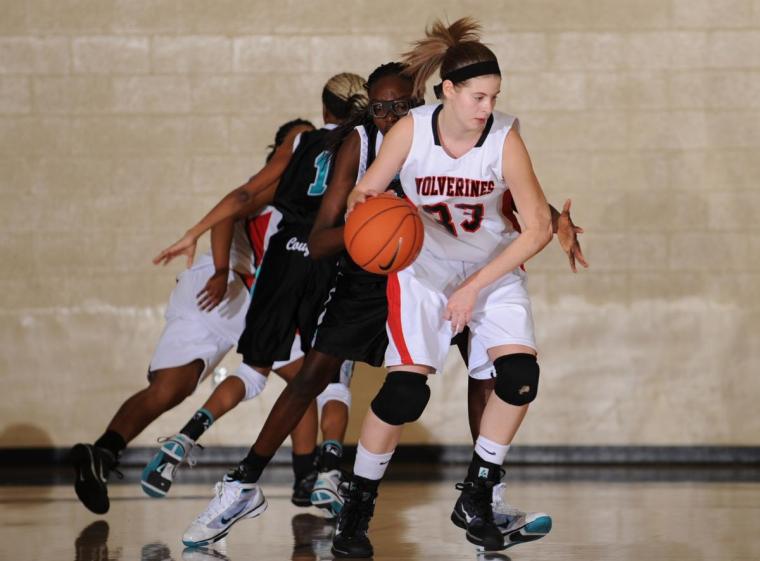

News carried in SGB Media notes that the research, conducted by the Oregon Consulting Group through data collected by the Colorado Department of Public Health & Environment (CDPHE), found that visiting health clubs poses a very low risk of COVID-19 transmission.
And a subsequent release from the Colorado Fitness Coalition (CFC) notes that the analysis confirms what health clubs have been communicating with their data all along: that gyms have one of the lowest transmission rates of all industries.
And that should come as great news to venues that host indoor sports, including functional fitness, basketball, racquetball, badminton and others.
The following two paragraphs are direct quotes from the Colorado Fitness Coalition:
"Researchers compared 32 weeks of Colorado gym attendance data representing nearly 8.5 million check-ins to the publicly available COVID-19 case counts. In its study, OCG found no correlation between COVID-19 case rates and gym attendance. It found no association to traditional gyms or fitness centers of the 59 different outbreak locations Colorado officials identified from more than 9,700 positive COVID-19 cases. A similar analysis of contract tracing data out of New York State discovered that gyms accounted for a low 0.06 percent of COVID-19 infections—one of the lowest of any business sector in the state. As such, Governor Andrew Cuomo eased capacity restrictions on gyms.
“There’s a lot of speculation regarding gyms that just isn’t based on facts and data. This independent study confirms that gyms are one of the safest places people will go all day,” said CFC Advisory Board Member, Paula Neubert of Club Greenwood. “Furthermore, maintaining our physical activity and mental health is critical in fighting the worst impacts of COVID-19.”
In mid-December, Colorado debuted its Five-Star Certification Program that allows facilities to show they are following smart procedures to limit the spread of COVID. Every gym that becomes a member of the CFC agrees to maintain a gold standard in safety, sanitation and security for their associates and members.
The study – and the example of Colorado’s proactive approach – should go a long way toward restoring confidence in attending indoor events. Earlier in December, a new NPR/PBS NewsHour/Marist Poll with the Center for Sports Communication at Marist College showed 56% of American sports fans believed people should not be participating in indoor team sports.
The telephone survey of 1,065 adults was conducted Dec. 1-6. In it, 603 respondents said they were sports fans. And not surprisingly, the sports fans were more likely to want to move forward with sports. The poll found 40% of sports fans believe people should be allowed to play indoor team sports.
While not a majority, 46% of sports fans said people should not be allowed to attend games for indoor team sports. It's the largest percentage of respondents to the poll question about fan attendance, and according to Jane McManus, director of the Center for Sports Communication, the fact that people are taking the virus seriously – and not treating it as an inconvenience that should be ignored – is noteworthy.
Earlier in the pandemic, fans railed against having sports cancelled. Now, it appears, as data has emerged concerning mortality rates and long-term effects of the virus, people appear to be less likely to want to move ahead without taking precautions.
"What I see in this data," McManus said, "is that the majority of fans are very aware of the risks and realities that we're living in and how it's impacting sports. It appears to me they want people to be safe, they don't for the most part want fans in the stands, they don't want unnecessary travel for college athletes and they're aware that indoor sports could lead to some community spread."
Fans were also asked whether they thought there should be fans at the NFL's Super Bowl, scheduled for Feb. 7 at an outdoor stadium in Tampa. The largest group of sports fan respondents — 49% — said they believed fans should not attend the game.
But as the Super Bowl has gotten closer, the NFL and local organizing committee have released information on safety measures that are restoring consumer confidence. From cashless payments to an outdoor festival, it is obvious the NFL wants the game to go forward – safely.
In Colorado, meanwhile, health clubs are hoping the new data will help everyone. In a typical year, the state’s fitness industry generates $695 million in revenue. If competitive events are hosted by clubs, any economic impact is magnified.
Having a vaccine available is expected to go a long way toward restoring confidence in sports – and indoor sports is where this confidence is likely to result in better attendance, and in the potential for states to loosen restrictions on gatherings, including tournaments.
It will also, say Colorado officials, improve the overall health of communities for individuals to lose their fear of gyms and to return to regular workouts.
“There has never been a more critical time to make exercise a top priority. The risks for severe COVID-19 infection are essentially all of the diseases associated with an inactive and unfit way of life. Until we have a vaccine in hand, the best thing a person can do to protect themselves from COVID-19 is to exercise, eat right and not smoke,” said Dr. Robert Sallis, MD. “For this reason, we need to figure out ways to safely keep gyms and other venues for exercise open, so that people can stay active. It is clear that gyms in Colorado, and around the country, have done an excellent job at keeping people safe. Let’s not diminish the importance of gyms in our communities to keep people healthy and help them cope with the ongoing stress and anxiety of the pandemic.”

